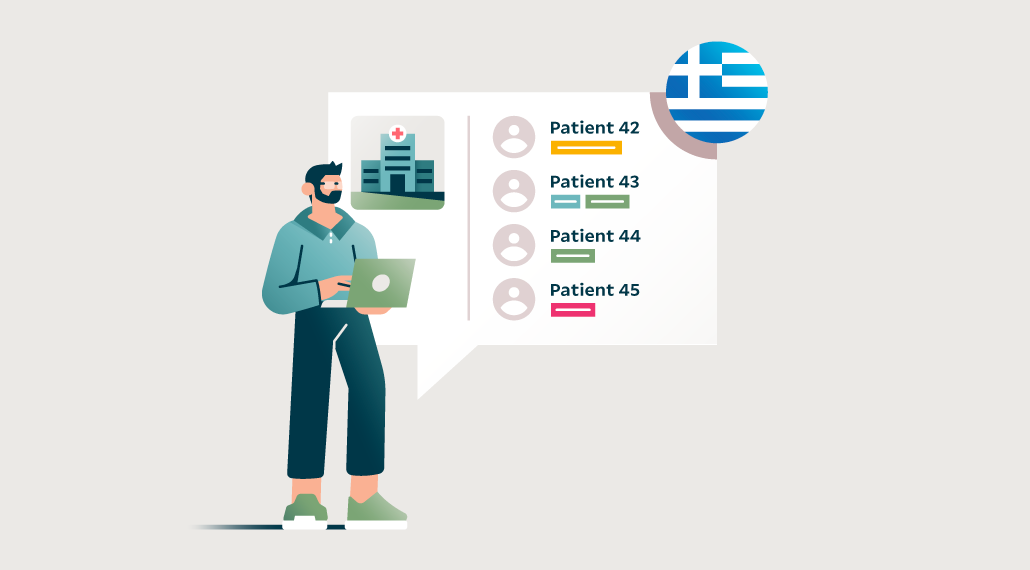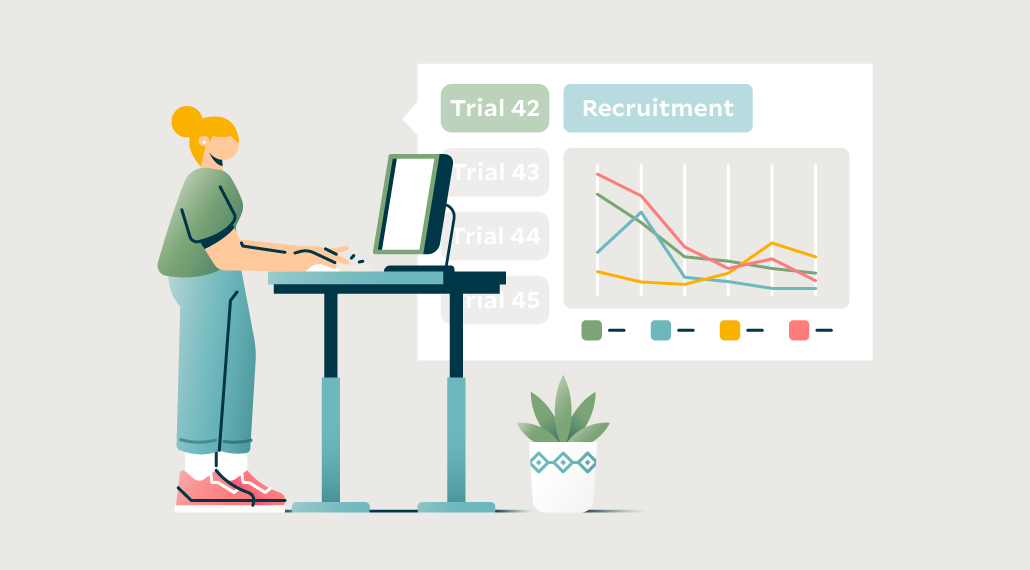May 24th, 2024
6 Ways for Clinical Research Coordinators to Reduce Clinical Trial Site Burden
By OneStudyTeam
.png)
When you have the right technology and workflows to reduce clinical trial site burden at your own research site, you get these results:
- Increased productivity and efficiency;
- Higher likelihood of reaching recruitment and enrollment goals – faster;
- Better patient care and satisfaction;
- Reduction of protocol deviations.
How can you reduce clinical trial site burden for your entire research site staff?
Clinical research coordinators can support teams across a number of steps to ensure better workflows and better trial outcomes. Coordinators can establish ways for their teams to:
- (1) Accurately and quickly capture source data in an electronic format.
- (2) Automatically create billables linked to digital protocol activities.
- (3) Manage pre-screening and enrollment tasks across all trials in one system.
- (4) Communicate with patients in a way that is convenient for them and is easy for sites to track.
- (5) Implement time-saving tools like automatic sponsor updates, visit schedules, and digital checklists.
- (6) Get proper training on the technology platform they’re working with to manage trials.

(1) Accurately and quickly capture source data in an electronic format to reduce the need for corrections later.
When it comes to source documentation, precise digital data entry not only ensures accurate trial results, but it also prevents you from doing extra followup work. With electronic source documentation, digital forms and built-in validation ensures there’s no need to backtrack to complete missed lab assessments or to correct data-entry errors. This saves your team time – they can focus on the work at hand instead of redoing work. Noticeably, one study showed a 37% time reduction with data capture via eSource vs. other methods.
Additionally, validation saves time for team members who are in training – they may not have a clinical research background, so built-in protections smooth out their onboarding process.
Digital data entry improves the patient experience as well. When you’re able to work with electronic source data instead of paper documentation, you spend less time flipping through pages and more time engaging in face-to-face interactions with patients. Those validations also prevent you from bothering patients with additional or repetitive questions and testing.
How do you ensure precise data entry? Look for an eSource solution that fits your needs. For example, the eSource solution in StudyTeam for Sites, a platform for managing recruitment and enrollment, provides templates for electronic data capture that are built per protocol. It also includes validation, with ranges set in certain entry fields (like pulse rate) to reduce keystroke errors.
(2) Automatically create billables linked to digital protocol activities to increase profitability.
When it comes to accurate activity tracking, there’s too much room for human error – someone overloaded with work could log an activity incorrectly or forget to log it entirely. There could also be a lack of understanding in terms of what items should be logged for sponsor invoicing.
According to a presentation by The Center for Clinical and Translational Science at the University of Alabama, sites fail to collect an average of 26% of their budget. That represents a huge loss in profitability, as well as funding for clinical operations.
Adopt clinical trial billing software. It’s an easy way to avoid errors and inconsistencies and to ensure billables are created accurately and in a timely manner. This is a key way to increase profitability (no money is left on the table) as well as productivity (staff spend less time on manual billing tasks and more time on recruitment and enrollment tasks).
How do you automatically create billables? Make sure the platform you use to manage patient visits and other study activities includes clinical trial billing functionality. StudyTeam for Sites users, for example, can access Site Financials, a premium suite that enables sites to associate budgets to all trial activities. When a user marks those activities completed, associated dollar amounts are automatically tracked for billing purposes.
(3) Manage pre-screening and enrollment tasks across all trials in one system, so you can more easily identify patients for current and future trials.
When you spend time looking for new potential candidates instead of pulling from a list of patients who have already been pre-screened, but failed to enroll in another one of your trials, you lose time. At the same time, those patients are put in a tough spot – they went through the enrollment process for one trial, were deemed ineligible, and now have to start their entire search process over. Solve this by using one patient database to identify potential candidates across all of your trials, maximizing your pre-screening and enrollment efforts.
How do you establish one patient database? See if your sponsor is able to connect all of the trials you’re working on to one technology platform. For example, when sites connect multiple similar trials on StudyTeam for Sites, they can build a multi-trial patient database that allows them to duplicate patient profiles across multiple trials. This means patients who don’t qualify for one study can easily be considered for another similar study. This prevents both the site and their patients from having to start over with their whole search process due to criteria failures on one trial.
(4) Communicate with patients in a way that is convenient for them and is easy for the site team to track.
The recruitment phase of a clinical trial can bring a huge influx of potential candidates who need to be contacted, pre-screened, and screened. That requires a lot of communication work by the site, from sharing trial education to scheduling (and re-scheduling) patient visits. If you’re juggling multiple methods of communication and you’re unable to see previous outreach by other team members to those patients, you are doubling your workload.
Try a secure patient text-messaging tool. This helps you improve the patient experience by communicating in a way that is quick and convenient for them (they’re likely carrying their phone around), and by avoiding duplicate communication, so patients feel like their care is smooth and continuous. This also creates a sense of connection for patients – information about the clinical trial they’re participating in and a personal contact are both right at their fingertips. A better sense of connection can prevent your site from seeing that 30% average dropout rate across clinical trials.
Additionally, this text communication reduces your team’s workload by allowing team members to see which patients have been communicated with and which need to be followed up with, so there’s no redundant work.
How do you securely text patients? Make sure you choose a text-messaging application that allows site users to access the same inbox for easy collaboration and patient followup. For example, StudyTeam has a Message Center feature with a shared inbox. Providers can see what previous communication a patient has received, then quickly and seamlessly follow up to keep the visit management process moving forward on time.
(5) Implement time-saving tools like automatic sponsor updates, visit schedules, and digital checklists to reduce unnecessary work and protocol deviations.
When you’re managing a large number of patient visits across all different enrollment phases and multiple protocols (or amended protocols), it’s no wonder visit windows get miscalculated and certain visit tasks get overlooked. It doesn’t help that staff often need to manually rework schedules when protocols are amended. Missed visits negatively affect the patient experience when they have to return for extra follow ups. This also adds more work and stress for staff. To prevent missed visits and extra manual work in setting up accurate schedules, consider digital tools like visit schedules that calculate visit windows and visit-specific checklists that ensure no step of pre-screening or screening is missed.
At the same time, be diligent about keeping sponsors updated about pre-screening progress. Traditionally, this can be tedious when you have to de-identify patient information and email the sponsor with log updates. Instead, make sure you use a platform that automatically de-identifies patient information and can be shared with the sponsor in a single click, so you keep them in the loop without extra effort.
How do you choose the right tools? Make sure the tools you’re looking into can be customized to fit the trial protocol: Visit schedules should be able to outline visit window tolerances and visit checklists should be able to outline all necessary pre-screening and screening tasks. For example, StudyTeam for Sites includes a Visit Management suite with both capabilities – our experts program those tolerances and checklists so that sites don’t have to.
(6) Get proper training on the technology platform you’re working with to manage trials.
Usually, adding one more technology tool means interrupting your busy workflow to learn how to use it. Training time can be tedious, leading to delays in study startup. When choosing a platform, make sure it comes with expert support, starting with rapid onboarding and training. This ensures software can be seamlessly integrated into your workflow right away, and later on when turnover and growth factor in.
For example, StudyTeam for Sites users have access to StudyTeam support experts for customization management, feedback and enhancement requests, and support with Standard Operating Procedures.
StudyTeam for Sites is also now conveniently equipped with an online, self-paced training and education portal called the StudyTeam Learning Center (STLC). Once site team members receive their StudyTeam logins, they can access the STLC through the Resources tab in the application. New StudyTeam users log in and conveniently learn how to use StudyTeam without needing to schedule and participate in live training sessions.
With the right technology and workflows, you can rapidly reduce clinical trial site burden.
By reducing site burden, you can more easily reach your trial’s recruitment and enrollment goals faster while providing the care that you strive for and your patients deserve. With that in mind, StudyTeam for Sites is designed to streamline research site workflows from study startup through data collection by providing users access to:
- eSource
- Site Financials
- Visit Management
- Message Center
Learn more about how you can use StudyTeam to achieve the best recruitment and enrollment outcomes for your patients.
Related Posts

How Does a Trial Manager in Greece Improve Clinical Trial Operations with StudyTeam®?
Dimitris Tziogas, local trial manager at a biotechnology company in ...
Read More
How to Address Key Clinical Trial Challenges, According to Clinresco Centres in South Africa
There’s no single solution to overcoming a research site’s specific ...
Read More
3 Clinical Trial Billing Challenges Research Sites Solve with StudyTeam
Challenge 1: Complicated coverage analysis Challenge 2: Tedious budgeting ...
Read More

.png?width=1030&height=570&name=gathering-patient-recruitment-data-computer%20(1).png)



.gif?width=1152&height=648&name=StudyTeam%20Learning%20Center%20Login%20(1).gif)
.png?width=64&name=OST%20Transparent%20(1).png)